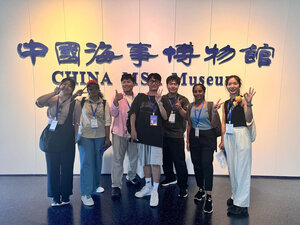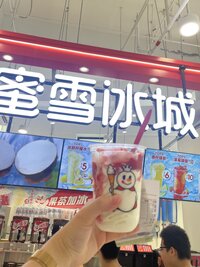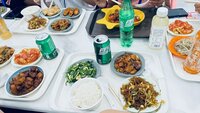OUR OQEANOUS STUDENTS
- HOME
- OUR OQEANOUS STUDENTS
- STP
- STP Report (SHOU Jul - Aug 2024)
Short Term Program
STP Report (SHOU Jul - Aug 2024)
2025.03.06
School of Marine Life Science, TUMSAT
4th year of Undergraduate Course
K.A.
Reason for Applying to STP
I have long wanted to study abroad because of my interest in foreign cultures, and I participated in OEP and was also considering attending IJP (Shanghai Ocean University), mainly because I wanted to get a feel for the facilities and atmosphere of the university I was visiting.
About Online Lectures
All the classes are in English, and you will have a full range of content both close to your field of study and beyond. There is a question-and-answer period, and some professors openly let us send questions via e-mail, so there is a lot to learn. I was delighted to be able to take classes from professors specializing in various fields, but at the same time, I found it difficult to understand the explanations given in English, which is many times faster than everyday conversation.
About the In-Person Program (Field Trip) at Shanghai Ocean University
 In addition to receiving explanations of research and touring research facilities, students were able to learn more about life at Shanghai Ocean University by eating in the school cafeteria and renting bicycles to get around the spacious university. We also enjoyed learning more about Shanghai itself through experiences not related to Shanghai Ocean University, such as visiting museum, crawfishing and peach picking in the botanical gardens, visiting a dairy factory and water treatment plant, experiencing the culture of singing and knitting, and sightseeing in the Shanghai urban area.
In addition to receiving explanations of research and touring research facilities, students were able to learn more about life at Shanghai Ocean University by eating in the school cafeteria and renting bicycles to get around the spacious university. We also enjoyed learning more about Shanghai itself through experiences not related to Shanghai Ocean University, such as visiting museum, crawfishing and peach picking in the botanical gardens, visiting a dairy factory and water treatment plant, experiencing the culture of singing and knitting, and sightseeing in the Shanghai urban area.
Interaction with Students from Other Universities
In this program, action groups were defined with a well-balanced combination of members from all universities. We interacted with students from Shanghai Ocean University, Korea Maritime University, Kasetsart University (Thailand), and University of Malaya (Malaysia). As expected, everyone used English as a second language, so it was a strange environment where we spoke in our native language with students from the same university and in English with students from other universities. While I was stuck in English or looking things up on a translation app, we could understand each other's difficulties, so naturally we could ask each other, "Is this what you mean?" I thought it was a very good environment for improving my English. Since this was my first trip abroad, I didn't know anything about Shanghai itself or the home countries of the students from the other schools, so I asked them "How is it in your country?" I had a lot of new discoveries and it was very meaningful for me to spend time talking about "how things are in your country" and teaching each other our mother tongues.
Changes in Awareness After Participation
I was interested in studying abroad, but had never traveled abroad and was not confident in my English conversation skills, so I felt uneasy. I was also reminded of the importance of studying vocabulary and commonly used phrases and practicing paraphrasing into simple expressions. I also felt again the importance of studying vocabulary and commonly used phrases and practicing paraphrasing into simple expressions. I also learned that it is very important to convey what you want to say in a way that you can convey it, and that the feeling of conveying and speaking is very important.
 Regarding Shanghai and Shanghai Ocean University, I was still shocked by the toilets that do not allow paper to be flushed down the drain and the difference in cost of living. As foreigners who come to Japan often praise Japan's hygiene management, I felt again how wonderful Japan's hygiene management is. Also, regarding prices, at Lawson, which you can see several stores throughout the campus, you can buy about three Chinese snacks for 10 yuan(200 yen), tapioca drink at the drink shop in the school cafeteria is 140 yen for Regularsize, and the school cafeteria also serves an inedible amount of food for 200 yen. However, the price difference between luxury and everyday items is significant, as Haagen-Dazs ice cream is about 800 yen, or a meal at a fine dining restaurant in a downtown urban area is about 4,000 yen. Cashless payment is widely used, and it was convenient to buy most things with Wechatpay or Alipay (like LINEPay or PayPay in Japan). Such payment services are also available on the subway, but I was more impressed by the police dog security inside subway stations and airport quarantine-level baggage screening. Shanghai is very hot in the summer, and since Shanghai Ocean University is 10 times larger than the Shinagawa campus, many people rent bicycles to get around. The school also has a wide range of undergraduate departments, and although it focuses mainly on fisheries and food sciences, it also has a Japanese language department. During the summer break, we could not see any serious research being done, but we did get the impression that there were a few students here and there in the laboratories.
Regarding Shanghai and Shanghai Ocean University, I was still shocked by the toilets that do not allow paper to be flushed down the drain and the difference in cost of living. As foreigners who come to Japan often praise Japan's hygiene management, I felt again how wonderful Japan's hygiene management is. Also, regarding prices, at Lawson, which you can see several stores throughout the campus, you can buy about three Chinese snacks for 10 yuan(200 yen), tapioca drink at the drink shop in the school cafeteria is 140 yen for Regularsize, and the school cafeteria also serves an inedible amount of food for 200 yen. However, the price difference between luxury and everyday items is significant, as Haagen-Dazs ice cream is about 800 yen, or a meal at a fine dining restaurant in a downtown urban area is about 4,000 yen. Cashless payment is widely used, and it was convenient to buy most things with Wechatpay or Alipay (like LINEPay or PayPay in Japan). Such payment services are also available on the subway, but I was more impressed by the police dog security inside subway stations and airport quarantine-level baggage screening. Shanghai is very hot in the summer, and since Shanghai Ocean University is 10 times larger than the Shinagawa campus, many people rent bicycles to get around. The school also has a wide range of undergraduate departments, and although it focuses mainly on fisheries and food sciences, it also has a Japanese language department. During the summer break, we could not see any serious research being done, but we did get the impression that there were a few students here and there in the laboratories.
 This trip allowed me to learn more about Shanghai Ocean University and life in Shanghai, deepen my image of studying abroad in the future, and eliminate the hurdle of communicating in English, which I rather enjoyed. I also have good memories of having made many friends with whom I bonded so deeply that I cried on the last day. The support about this program is really generous and I recommend it to anyone who is interested in studying abroad as a first step to know about traveling abroad.
This trip allowed me to learn more about Shanghai Ocean University and life in Shanghai, deepen my image of studying abroad in the future, and eliminate the hurdle of communicating in English, which I rather enjoyed. I also have good memories of having made many friends with whom I bonded so deeply that I cried on the last day. The support about this program is really generous and I recommend it to anyone who is interested in studying abroad as a first step to know about traveling abroad.

